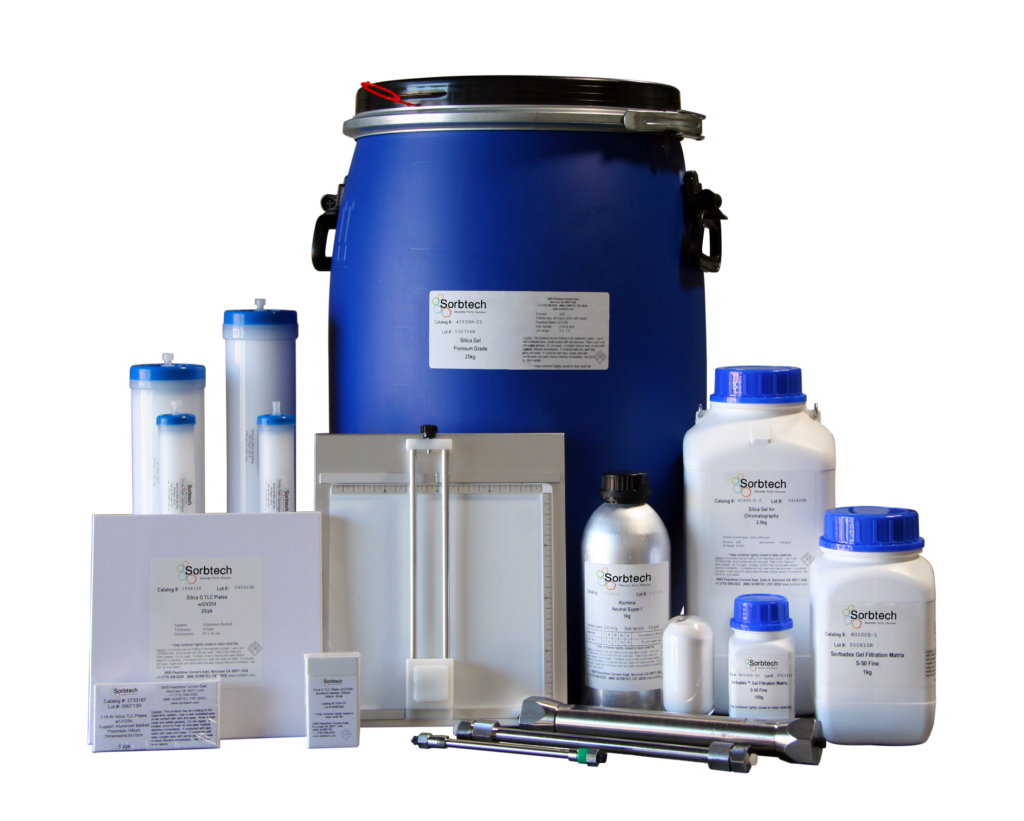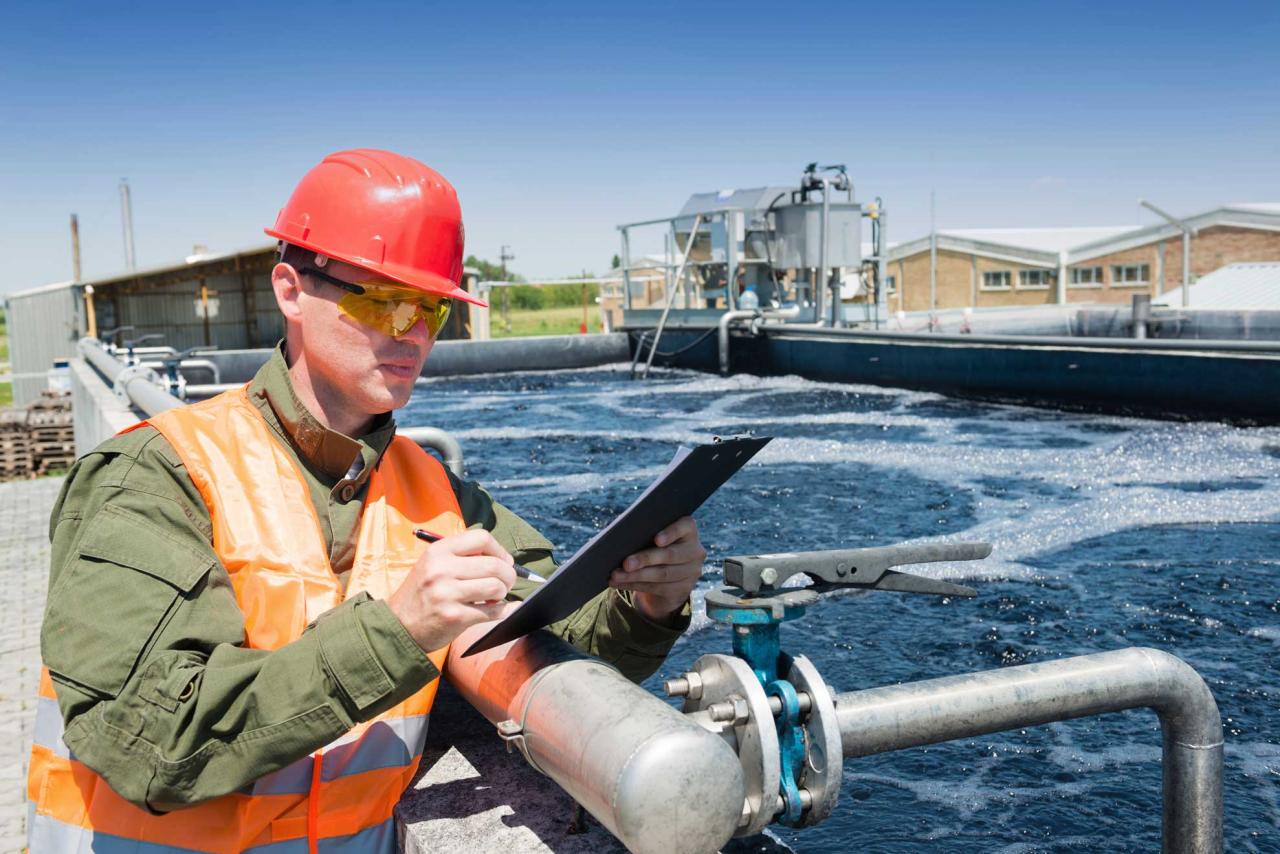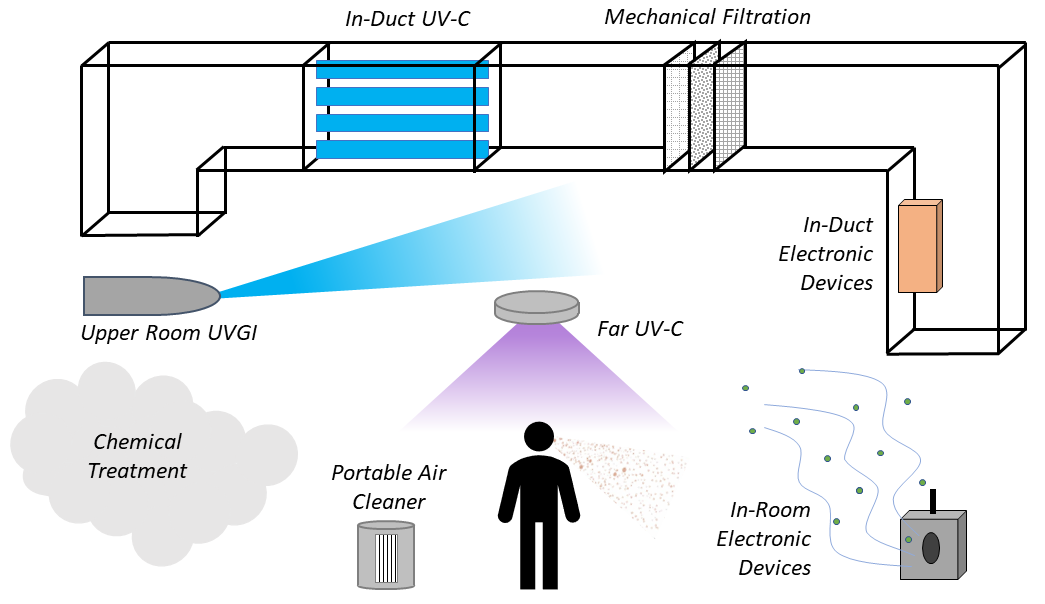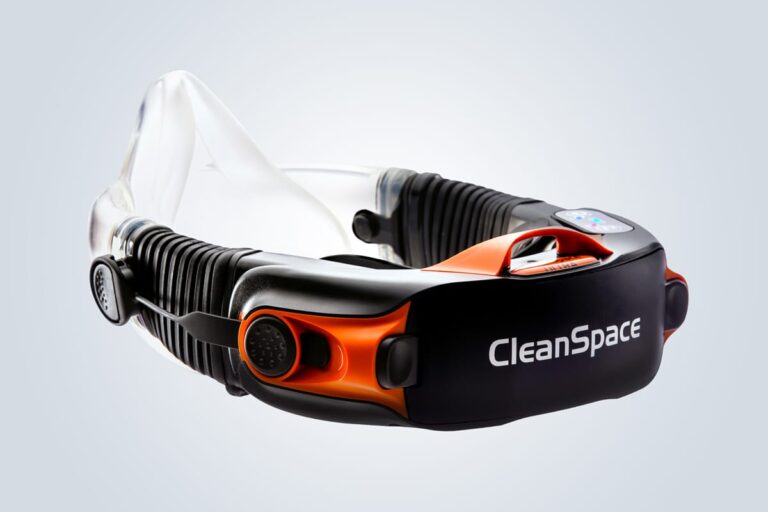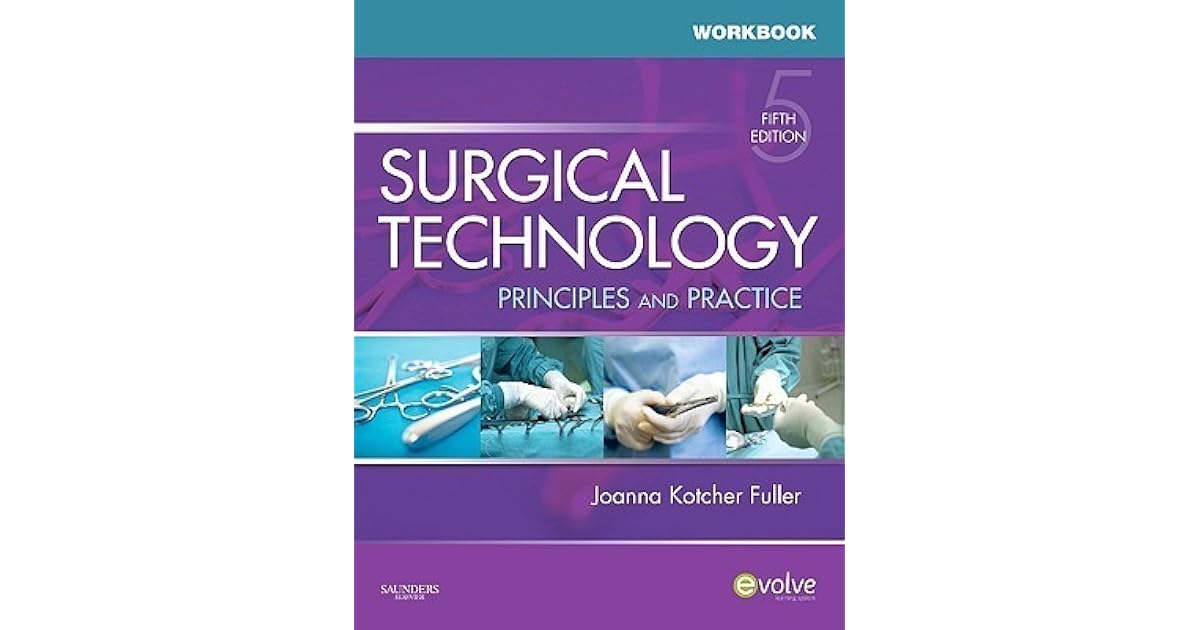Filtration Technology: A Comprehensive Guide
Filtration technology is an essential process used across various industries to separate unwanted particles from liquids or gases. From purifying drinking water to cleaning air in our homes, filtration plays […]

Filtration technology is an essential process used across various industries to separate unwanted particles from liquids or gases. From purifying drinking water to cleaning air in our homes, filtration plays a crucial role in ensuring the quality of our environment and the products we consume.
This technology utilizes various methods, materials, and system designs to achieve desired outcomes. By understanding the fundamental principles and diverse applications of filtration, we can appreciate its significant impact on our lives.
Introduction to Filtration Technology

Filtration technology is an essential process used in various industries to separate solid particles from liquids or gases. It plays a crucial role in purifying water, removing contaminants from air, and producing high-quality products.
Filtration processes rely on the principle of separating substances based on their size and physical properties. This involves passing a fluid (liquid or gas) through a filter medium, which acts as a barrier to retain the solid particles while allowing the fluid to pass through.
Applications of Filtration Technology
Filtration technology finds wide-ranging applications across various industries, including:
- Water Treatment: Filtration is vital for removing impurities, such as sediment, bacteria, and viruses, from drinking water sources. This ensures safe and clean water for consumption.
- Air Purification: Filtration systems remove pollutants like dust, pollen, and smoke from the air, improving indoor air quality and protecting human health.
- Food and Beverage Industry: Filtration plays a crucial role in clarifying beverages, removing particles from food products, and extending their shelf life.
- Pharmaceutical Industry: Filtration is essential for producing sterile pharmaceuticals, removing impurities from drug solutions, and ensuring the safety and efficacy of medicines.
- Chemical and Industrial Processes: Filtration is used in various industrial processes, such as separating solid byproducts, purifying chemicals, and recovering valuable materials.
Types of Filtration Technology
Filtration technology encompasses a wide range of techniques and methods used to separate solid particles from fluids, including liquids and gases. The choice of filtration technology depends on factors such as the size and nature of the particles to be removed, the properties of the fluid, and the desired purity level.
Filtration technologies are categorized based on their working principles and the mechanisms involved in separating the particles from the fluid.
Membrane Filtration, Filtration technology
Membrane filtration utilizes semi-permeable membranes with specific pore sizes to separate particles based on their size. This method is commonly employed in various applications, including water treatment, pharmaceutical manufacturing, and food processing.
Membrane filtration encompasses several types, each with unique characteristics and applications:
* Microfiltration (MF): This technique removes particles ranging from 0.1 to 10 micrometers, including bacteria, algae, and suspended solids. MF membranes are often used in water treatment to remove turbidity and improve water quality.
* Ultrafiltration (UF): UF membranes have smaller pore sizes (0.01 to 0.1 micrometers) and can remove larger molecules like proteins, viruses, and colloids. UF is commonly used in the pharmaceutical industry for sterilizing solutions and in wastewater treatment to remove organic pollutants.
* Nanofiltration (NF): NF membranes have even smaller pore sizes (1 to 10 nanometers) and can remove dissolved salts, heavy metals, and organic molecules. NF is used in desalination processes to remove salts from seawater and in the food industry to concentrate fruit juices.
* Reverse Osmosis (RO): RO is the most stringent membrane filtration method, employing membranes with pore sizes less than 1 nanometer. This technique can remove almost all dissolved salts, including ions, and is widely used for producing drinking water from seawater and for industrial process water purification.
Gravity Filtration
Gravity filtration relies on the force of gravity to pull the fluid through a filter medium, separating solid particles. This method is simple and cost-effective, making it suitable for various applications.
Gravity filtration is typically used in:
* Laboratory settings: Using filter paper or other porous materials to separate precipitates or solid residues from solutions.
* Water treatment: Employing sand filters to remove larger particles and suspended solids from water.
* Coffee brewing: Utilizing coffee filters to remove coffee grounds from the brewed coffee.
Pressure Filtration
Pressure filtration utilizes pressure to force the fluid through a filter medium, enhancing the filtration rate and efficiency. This method is commonly used in industrial settings where high throughput and rapid filtration are required.
Pressure filtration is used in various applications:
* Industrial wastewater treatment: Removing suspended solids and contaminants from industrial wastewater.
* Pharmaceutical manufacturing: Sterilizing solutions and removing particulate matter from pharmaceutical products.
* Food processing: Clarifying fruit juices and removing impurities from food products.
Other Filtration Technologies
Besides membrane, gravity, and pressure filtration, other filtration technologies exist, each with its unique advantages and applications:
* Vacuum Filtration: This method uses a vacuum to pull the fluid through a filter medium, enhancing the filtration rate and efficiency. Vacuum filtration is often used in laboratory settings for separating precipitates and in industrial settings for removing solid particles from liquids.
* Centrifugal Filtration: Centrifugal force is applied to separate solid particles from the fluid. This method is efficient for separating fine particles and is commonly used in the pharmaceutical industry for sterilizing solutions and in wastewater treatment for removing suspended solids.
| Filtration Technology | Advantages | Disadvantages | Applications |
|---|---|---|---|
| Membrane Filtration | High efficiency, removes a wide range of particles, can be used for sterilizing solutions | Can be expensive, requires specialized equipment, may have limitations with certain types of particles | Water treatment, pharmaceutical manufacturing, food processing |
| Gravity Filtration | Simple and cost-effective, easy to operate | Slow filtration rate, limited efficiency, may not be suitable for removing fine particles | Laboratory settings, water treatment, coffee brewing |
| Pressure Filtration | Fast filtration rate, high efficiency, suitable for removing fine particles | Requires specialized equipment, can be expensive, may require high pressure | Industrial wastewater treatment, pharmaceutical manufacturing, food processing |
| Vacuum Filtration | Enhances filtration rate, can be used for separating precipitates | Requires vacuum source, may not be suitable for all types of fluids | Laboratory settings, industrial settings |
| Centrifugal Filtration | Efficient for separating fine particles, high throughput | Requires specialized equipment, can be expensive | Pharmaceutical manufacturing, wastewater treatment |
Filtration Media and Materials
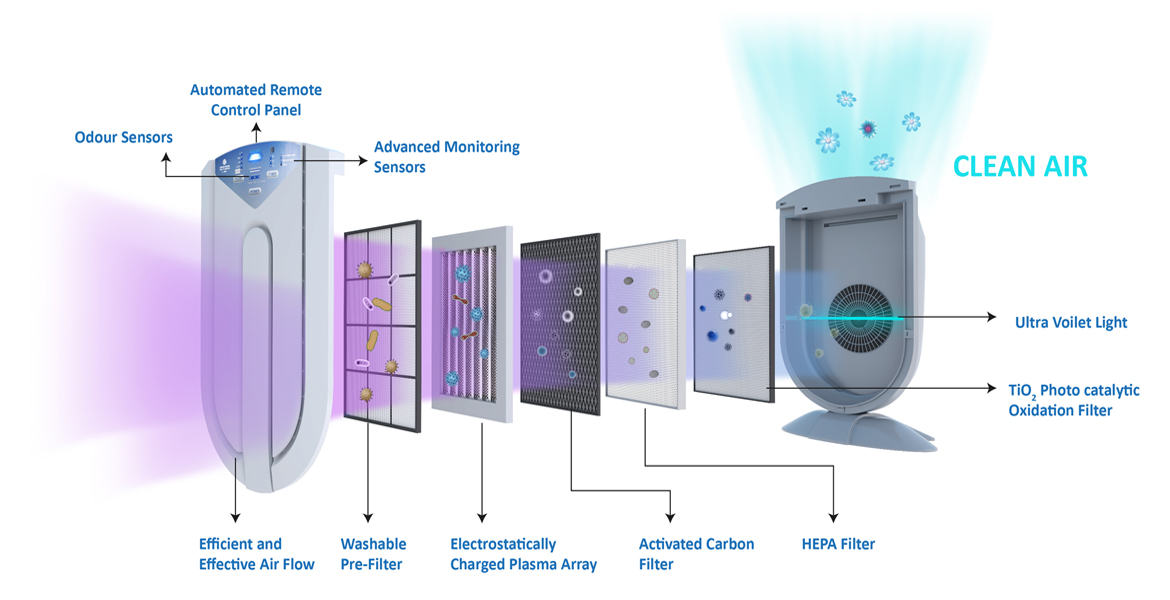
Filtration media are the heart of any filtration system, acting as the barrier that separates contaminants from the fluid being filtered. The choice of filtration media is crucial and depends on the specific application, the type of contaminants being removed, and the desired level of purity.
Types of Filtration Media
The selection of filtration media is determined by the specific requirements of the filtration process, including the type of contaminants to be removed, the desired level of purity, and the flow rate. Different materials exhibit unique properties that make them suitable for specific applications.
| Material Type | Properties | Applications |
|---|---|---|
| Sand | • High porosity and permeability • Relatively inexpensive • Durable and chemically inert |
• Water treatment (pre-filtration) • Wastewater treatment • Industrial processes (e.g., removing suspended solids) |
| Activated Carbon | • High surface area • Excellent adsorption capacity • Removes organic compounds, chlorine, and odors |
• Water treatment (purification) • Air purification • Industrial processes (e.g., removing volatile organic compounds) |
| Ceramic | • High pore density and uniformity • Resistant to high temperatures and chemicals • Biocompatible |
• Water treatment (microfiltration and ultrafiltration) • Pharmaceutical and food processing • Medical devices (e.g., filters for dialysis machines) |
| Membrane Filters | • Thin, porous membranes • High filtration efficiency • Used for microfiltration, ultrafiltration, nanofiltration, and reverse osmosis |
• Water treatment (advanced purification) • Pharmaceutical and biotechnology industries • Food and beverage processing |
| Fiber Filters | • Made from natural or synthetic fibers • High surface area and filtration efficiency • Available in various pore sizes and materials |
• Air filtration (HVAC systems) • Industrial processes (e.g., dust and fume removal) |
Filtration System Design and Optimization
Designing a filtration system involves considering various factors to ensure it effectively removes contaminants and meets specific requirements. Optimization focuses on enhancing system performance to achieve desired outcomes, such as maximizing efficiency, minimizing costs, and prolonging lifespan.
Factors to Consider in Filtration System Design
The design of a filtration system requires careful consideration of several factors to ensure optimal performance. These factors include:
- Flow Rate: The volume of fluid passing through the system per unit time. This dictates the size and capacity of the filter and associated components. A higher flow rate necessitates larger filters and pumps.
- Pressure: The force exerted on the fluid as it passes through the filter. Higher pressures can lead to faster filtration but may also increase the risk of filter damage or clogging.
- Particle Size: The size of the contaminants to be removed. This determines the pore size of the filter media and the type of filtration technology employed.
- Fluid Properties: The physical and chemical properties of the fluid, such as viscosity, density, and pH, influence the filtration process and the choice of filter materials.
- Contaminant Concentration: The amount of contaminants present in the fluid. Higher concentrations may require more extensive filtration or multiple stages.
- Operating Temperature: The temperature at which the system will operate. Some filter materials may degrade at high temperatures, requiring the use of heat-resistant materials.
- Filtration Efficiency: The percentage of contaminants removed from the fluid. This depends on the filter media, flow rate, and other factors.
- Filtration Cost: The cost of the filter system, including installation, operation, and maintenance. This involves trade-offs between initial investment and long-term operational costs.
Methods for Optimizing Filtration System Performance
Optimization techniques are crucial to maximize filtration system efficiency and minimize operational costs. Some common methods include:
- Pre-filtration: Employing a coarser filter upstream to remove larger particles and reduce the load on the primary filter, extending its lifespan and improving efficiency.
- Backwashing: Periodically reversing the flow direction to remove accumulated debris from the filter media, restoring its filtration capacity and extending its service life.
- Filter Media Selection: Choosing the appropriate filter media based on the specific contaminants, flow rate, and pressure requirements. This ensures optimal removal of contaminants and efficient operation.
- Process Control: Implementing monitoring and control systems to track filtration performance, adjust operating parameters, and identify potential issues early, ensuring consistent filtration quality and minimizing downtime.
- Regular Maintenance: Performing routine inspections, cleaning, and replacement of filter components as needed to prevent clogging, ensure optimal performance, and extend the system’s lifespan.
Filtration System Design and Optimization Flow Chart
The following flowchart illustrates the key steps involved in designing and optimizing a filtration system:
Applications of Filtration Technology
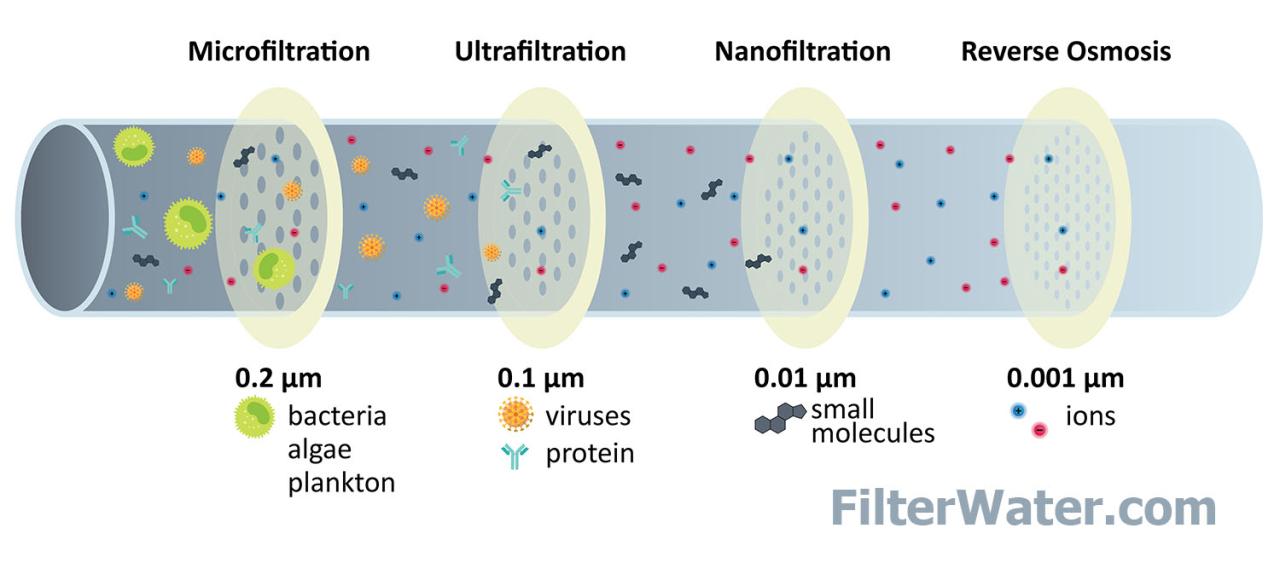
Filtration technology plays a crucial role in various industries, addressing diverse needs ranging from purifying water for human consumption to separating valuable components in manufacturing processes. It is a versatile and indispensable tool for enhancing product quality, ensuring safety, and protecting the environment.
Water Treatment
Filtration is a fundamental process in water treatment, ensuring the removal of impurities and contaminants to produce safe and potable water.
- Municipal Water Treatment: Filtration is employed in municipal water treatment plants to remove suspended solids, bacteria, viruses, and other contaminants from raw water sources. This process typically involves multiple stages, including sedimentation, coagulation, filtration through sand filters, and disinfection.
- Industrial Water Treatment: Industries utilize filtration technology to treat water for various purposes, such as boiler feedwater, process water, and cooling water. These applications often require specific filtration media and systems to remove contaminants that can impact equipment performance or product quality.
- Domestic Water Treatment: Filtration systems are commonly installed in homes to improve the quality of tap water. These systems can remove sediment, chlorine, heavy metals, and other impurities, providing cleaner and healthier drinking water.
Air Purification
Air filtration is essential for removing pollutants, allergens, and other airborne contaminants from indoor and outdoor environments.
- Residential Air Purification: Air purifiers equipped with HEPA filters are widely used in homes to remove dust, pollen, pet dander, and other allergens, improving indoor air quality and promoting respiratory health.
- Commercial Air Purification: In commercial buildings, air filtration systems are critical for maintaining clean and healthy indoor environments. They can remove pollutants such as volatile organic compounds (VOCs), smoke, and bacteria, improving air quality for employees and customers.
- Industrial Air Purification: Industrial air filtration systems are designed to handle specific types of contaminants, such as dust, fumes, and gases, depending on the industry and process. These systems are essential for protecting workers, maintaining equipment, and complying with environmental regulations.
Food Processing
Filtration plays a vital role in food processing, ensuring product safety, quality, and shelf life.
- Beverage Filtration: Filtration is used in the beverage industry to remove impurities, haze, and microorganisms from liquids like juice, wine, and beer. This process enhances the clarity, taste, and stability of the final product.
- Dairy Filtration: Filtration is essential in dairy processing to remove bacteria, spores, and other contaminants from milk and other dairy products. This ensures product safety and extends shelf life.
- Oil and Fat Filtration: Filtration is used to remove impurities and contaminants from edible oils and fats, improving their clarity, flavor, and stability.
Pharmaceutical and Biotechnology
Filtration technology is crucial in the pharmaceutical and biotechnology industries, ensuring the purity and sterility of products.
- Sterile Filtration: Sterile filtration is used to remove bacteria, viruses, and other microorganisms from pharmaceutical solutions, ensuring product sterility and safety.
- Process Filtration: Filtration is used in various stages of pharmaceutical manufacturing to remove impurities, particles, and other contaminants from raw materials, intermediates, and final products.
- Bioprocessing: Filtration plays a vital role in bioprocessing, including the separation and purification of proteins, enzymes, and other biomolecules.
Other Applications
Filtration technology has numerous other applications across various industries, including:
- Wastewater Treatment: Filtration is used in wastewater treatment plants to remove suspended solids, organic matter, and other contaminants, ensuring the safe discharge of treated water.
- Chemical Processing: Filtration is used in chemical processing to separate solids from liquids, purify products, and remove unwanted byproducts.
- Electronics Manufacturing: Filtration is used in electronics manufacturing to remove particles and contaminants from air and liquids, ensuring the quality and reliability of electronic components.
| Industry | Specific Applications | Benefits of Filtration Technology |
|---|---|---|
| Water Treatment | Municipal water treatment, industrial water treatment, domestic water treatment | Ensures safe and potable water, removes contaminants, improves water quality |
| Air Purification | Residential air purification, commercial air purification, industrial air purification | Improves indoor air quality, removes pollutants, allergens, and other contaminants, promotes respiratory health |
| Food Processing | Beverage filtration, dairy filtration, oil and fat filtration | Ensures product safety and quality, extends shelf life, enhances clarity, taste, and stability |
| Pharmaceutical and Biotechnology | Sterile filtration, process filtration, bioprocessing | Ensures product purity and sterility, removes contaminants, enables efficient separation and purification |
| Wastewater Treatment | Wastewater treatment plants | Removes contaminants, ensures safe discharge of treated water, protects the environment |
| Chemical Processing | Separation of solids from liquids, product purification, removal of byproducts | Enhances product quality, improves process efficiency, reduces waste |
| Electronics Manufacturing | Removal of particles and contaminants from air and liquids | Ensures quality and reliability of electronic components, reduces defects |
Future Trends in Filtration Technology
The field of filtration technology is constantly evolving, driven by the need for more efficient, sustainable, and precise separation processes. Emerging trends are pushing the boundaries of what is possible, offering innovative solutions to address challenges in various industries. These trends are not only improving existing filtration methods but also opening up new avenues for tackling complex separation tasks.
Nanofiltration
Nanofiltration is a membrane-based separation process that utilizes membranes with pore sizes in the nanometer range (1-100 nm). These membranes are capable of removing dissolved organic molecules, viruses, bacteria, and other particles from water and other liquids.
Nanofiltration offers several advantages:
- High rejection rates: Nanofiltration membranes can effectively remove a wide range of contaminants, including dissolved salts, organic molecules, and microorganisms.
- Energy efficiency: Compared to other separation techniques, nanofiltration requires relatively low energy consumption, making it a more sustainable option.
- Versatility: Nanofiltration can be applied to a wide range of applications, including water treatment, food processing, pharmaceutical production, and wastewater treatment.
Nanofiltration is increasingly being used in water treatment applications, particularly for desalination, municipal water purification, and industrial wastewater treatment. It is also finding applications in the food and beverage industry for concentrating fruit juices, removing unwanted components from wine, and producing dairy products.
Membrane Bioreactors
Membrane bioreactors (MBRs) are a hybrid technology that combines biological treatment with membrane filtration. MBRs use a membrane to separate the biomass from the treated effluent, resulting in high-quality water.
MBRs offer several advantages:
- High effluent quality: MBRs produce highly treated effluent with low turbidity, suspended solids, and microbial contamination.
- Compact footprint: MBRs require a smaller footprint compared to conventional wastewater treatment systems, making them suitable for space-constrained applications.
- Flexibility: MBRs can be easily adapted to treat various types of wastewater, including municipal wastewater, industrial wastewater, and agricultural runoff.
MBRs are becoming increasingly popular for wastewater treatment, particularly in urban areas where space is limited. They are also being used for industrial wastewater treatment, especially in industries that generate high volumes of wastewater with stringent discharge requirements.
Electrospinning
Electrospinning is a versatile technique that uses electrostatic forces to produce nanofibers from polymer solutions or melts. These nanofibers can be used to create filtration membranes with unique properties, such as high surface area, controlled pore size, and enhanced filtration efficiency.
Electrospun membranes have several advantages:
- High surface area: Electrospun membranes have a large surface area, which enhances their filtration capacity.
- Tunable pore size: The pore size of electrospun membranes can be precisely controlled by adjusting the electrospinning parameters.
- Enhanced filtration efficiency: Electrospun membranes can effectively remove small particles and contaminants, including viruses, bacteria, and nanoparticles.
Electrospinning is finding applications in various filtration areas, including air filtration, water purification, and bio-filtration. Electrospun membranes are being used to develop high-performance air filters for removing particulate matter, bacteria, and viruses. They are also being explored for water purification applications, such as removing heavy metals, organic pollutants, and microorganisms.
Microfiltration
Microfiltration is a membrane-based separation process that uses membranes with pore sizes in the micrometer range (0.1-10 µm). These membranes are capable of removing suspended solids, bacteria, and other microorganisms from liquids.
Microfiltration offers several advantages:
- High removal efficiency: Microfiltration membranes can effectively remove particles larger than their pore size, including bacteria, yeast, and other microorganisms.
- Low energy consumption: Microfiltration is a relatively energy-efficient process, requiring lower pressure than other membrane filtration techniques.
- Wide range of applications: Microfiltration is used in various industries, including water treatment, food and beverage processing, pharmaceutical production, and biotechnology.
Microfiltration is commonly used in water treatment applications, such as pre-treatment for reverse osmosis, removal of suspended solids from drinking water, and clarification of industrial wastewater. It is also widely used in the food and beverage industry for sterilizing liquids, clarifying juices, and removing microorganisms from milk.
Filtration in 3D Printing
3D printing, also known as additive manufacturing, is revolutionizing various industries by enabling the creation of complex objects with intricate designs. Filtration technology is being integrated into 3D printing to create customized filters with unique properties and functionalities.
3D-printed filters offer several advantages:
- Tailored design: 3D printing allows for the creation of filters with complex geometries and customized pore structures to meet specific filtration requirements.
- Improved efficiency: 3D-printed filters can be designed to optimize filtration efficiency, reducing energy consumption and improving contaminant removal.
- Enhanced functionality: 3D printing enables the integration of sensors, actuators, and other functionalities into filters, creating smart filtration systems.
3D printing is transforming the filtration landscape, enabling the creation of filters with enhanced performance and functionality. This technology is being explored for applications in various fields, including air filtration, water purification, and medical devices.
Conclusion
As we delve deeper into the world of filtration technology, we discover its remarkable adaptability and continuous evolution. From traditional methods to cutting-edge innovations, filtration continues to shape our world, ensuring a cleaner and healthier environment for all.
Filtration technology is essential for many industries, ensuring clean and efficient processes. Precision Hose Technology Inc specializes in providing high-quality hoses that play a crucial role in fluid transfer systems, often incorporating filtration components for optimal performance. These hoses contribute significantly to the overall efficiency and effectiveness of filtration systems, guaranteeing a consistent and reliable flow of clean fluids.

